(Get free painting tips and plein air painting techniques sent straight to your inbox or on my social media.)
My Top 10 Tips For Painting Landscapes
Here are my top ten tips for painting landscapes in oils, acrylics, or watercolor that will transform your work to a new and higher level.
Please share this guide using the social media buttons
Thank you!
Barry
Landscape Painting Tip #1: Use Chromatic Perspective To Create Depth And A Sense Of Distance In Your Landscapes
When painting landscapes, you can create emotion in your viewer by evoking a sense of the vastness and expanse of the landscape. Here is a key tip for how to do that.
One of the important ways you can create a sense of depth, or atmospheric perspective, in your landscape paintings is to follow the principle of chromatic perspective.
This means that the colors in the landscape change from the foreground to the distance. In the foreground colors are more saturated or intense. Artists sometimes refer to these colors as high chroma colors. For example, you might see bright reds and yellows in the foreground of your landscape painting.
But in the far distance of your landscape, the colors will be very different. You will only see muted grays, or colors with low saturation, or low chroma. When painting landscapes use this change in saturation to create a feeling of depth.
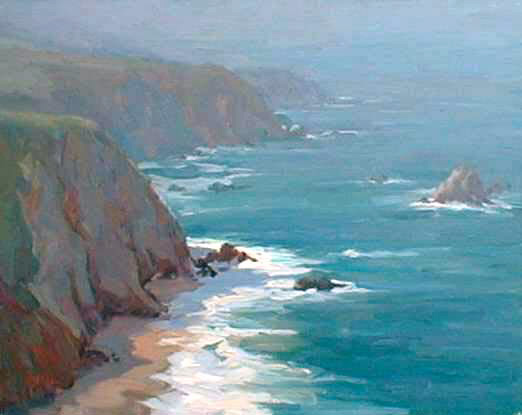
The above landscape painting of the Big Sur coastline in California was done by the author of the Virtual Art Academy® Apprentice Program early in his career. It won a top award at the Carmel Plein Air Painting Competition, an event attended by America’s top plein air painters. A key factor in its success was the careful gradation of saturation in the colors from the foreground cliffs to the background cliffs. It was this that to a great extent created the painting’s mood. Painting landscapes is often just about following some basic principles that anyone can learn, such as this one.
Landscape Painting Tip #2. Show Directing Lines.
When painting landscapes, use techniques to move the viewer’s eye into a landscape. In this way you can make your landscape paintings much more engaging. One way of doing this is to use directing lines. Directing lines are lines you use when painting landscapes that direct the viewer’s eye into the distance. You can use fences, thin objects such as a log or stick lying on the ground, or the edges of buildings in perspective to do this.
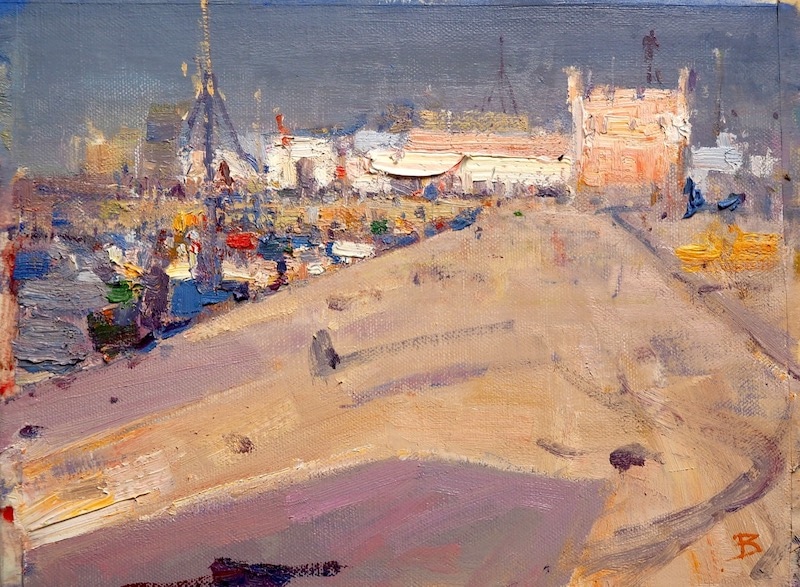
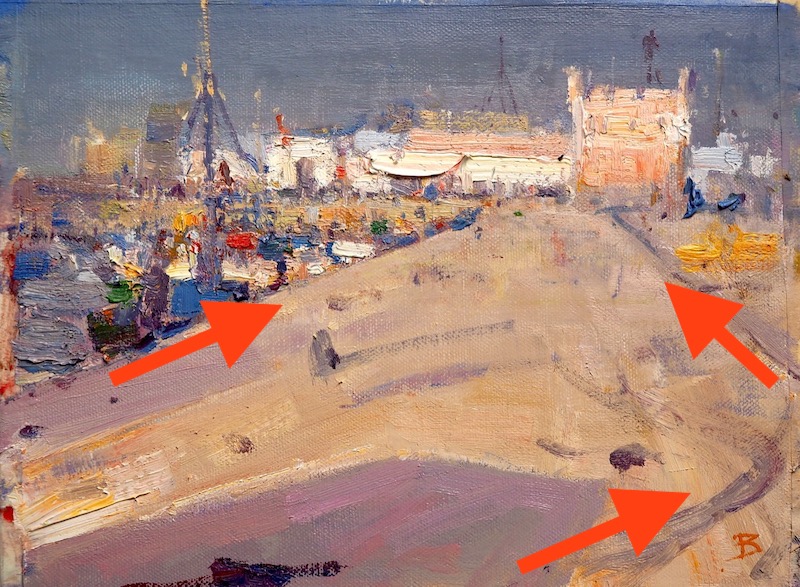
In this landscape painting I did in Essaouira, Morocco, I used the edge of the harbor, the track marks on the road, and the edges of the shadow lines in order to draw the viewer’s gaze into the distance. This gives the landscape painting a feeling of depth and distance.
Landscape Painting Tip #3: Use A Dominant Value
When students are painting landscapes, they often fail because the pattern of lights and darks are too confused or too complex.
One of the most important principle in designing the distribution of lights and darks in a landscape is the concept of a dominant value. The idea behind this principle of design is that more than half of the area of your painting should be either gray, white (or almost white), or black (or a very dark gray). Typically most of my landscape paintings are painted in middle value grays, with a few dark shapes and light shapes to add interest to the design.
Follow his principle when painting landscapes and you will see a major improvement in your work.
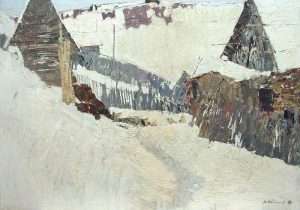
This is a beautiful landscape painting “Old Ladoga” by Nikolai Efimovich Timkov , is an excellent example of a dominant white painting. It is this structure that makes this painting so powerful.
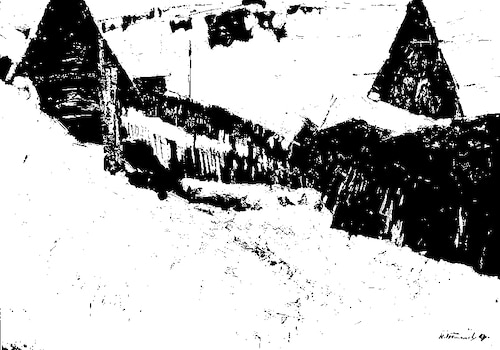
There is a whole body of knowledge known as notan on this topic. For more information on applying the ideas of notan when painting landscapes, see my online painting classes curriculum.
Landscape Painting Tip #4: Create A Clear Light And Shade Pattern
It is very important when painting landscapes that you make the light and shade patterns very clear. A clear light and shade pattern will explain how light is hitting the parts of your landscape and give your landscape paintings a sense of having three dimensions.
If you do not do this clearly, you may find that things in your landscape appear to be in one flat plane.
How to create a light and shade pattern in your landscape paintings when painting landscapes
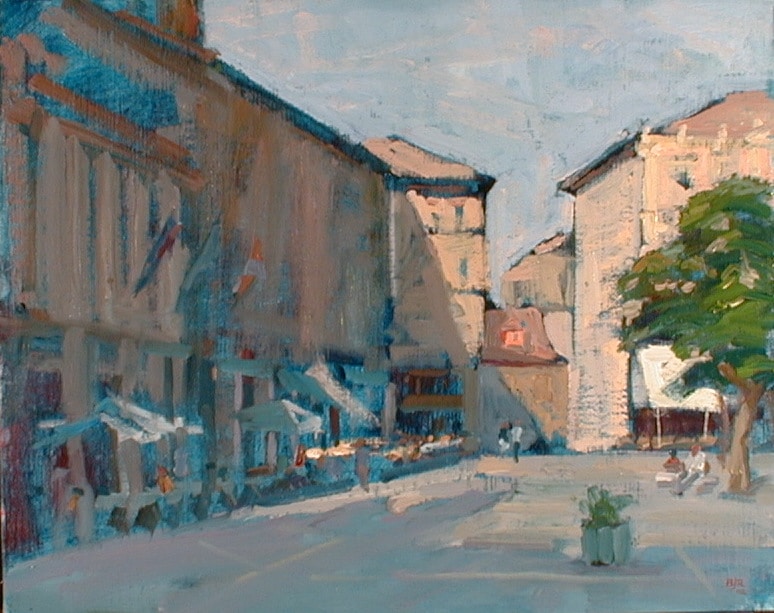
To create this sense of three dimensions, or ‘form’ when painting landscapes, follow these steps:
Total Time: 20 minutes
Step 1: Find shadow pattern
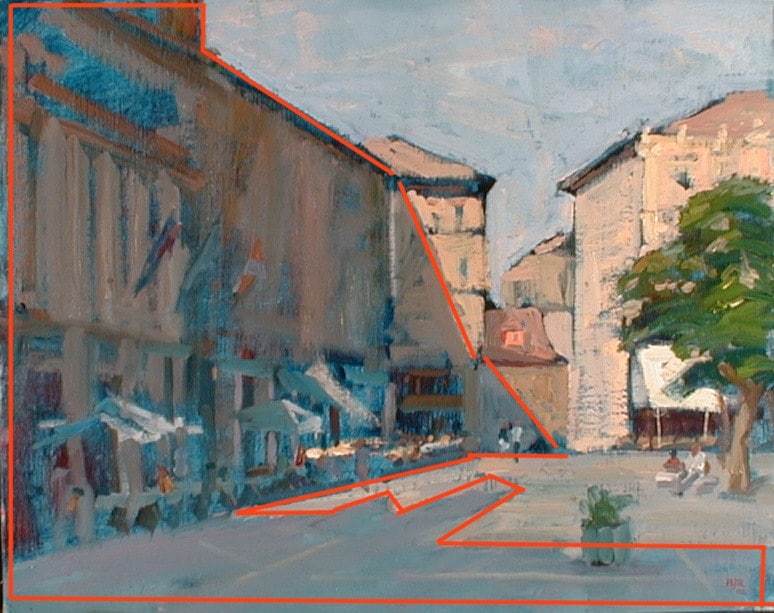
Find the dark pattern that is created by the shadowed side of objects or by the shadows they cast on the ground. Paint these shapes using a color that has the same value as a dark gray or middle value gray.
Step 2: Assign parts of the landscape to the light or to the shade
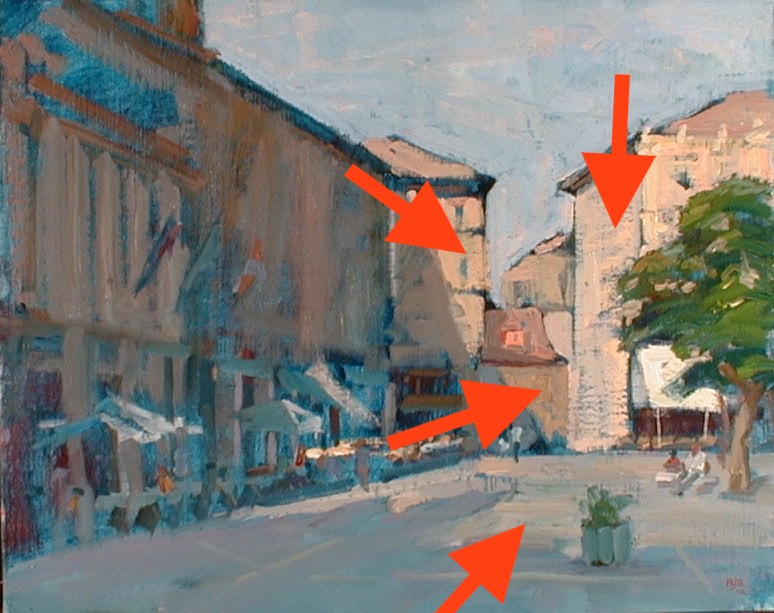
When painting landscapes, look for all the things that are in the light, and paint them using colors that have the same value as a light gray. These items are all in the light. Keep these values distinctly separate from the shadow values.
In the above painting I did in Segovia, Spain, you can clearly see the patterns of the buildings in the light and the buildings in the shadows as well as the shadows they cast on the ground.
Landscape Painting Tip #5: Keep Your Shapes Simple
Good shape design is at the heart of all great landscape paintings. But this can be difficult when painting landscapes, as many natural forms such as trees are very confusing. You can simplify your shapes, for example when you have a lot of trees together, by treating them as one big shape, and not as a lot of individual separate shapes.
In this painting you can see that I treated all of the distant mountains as one large shape. I made the details in that shape very subtle. In this way I avoided breaking up the painting into a lot of small and confusing shapes.
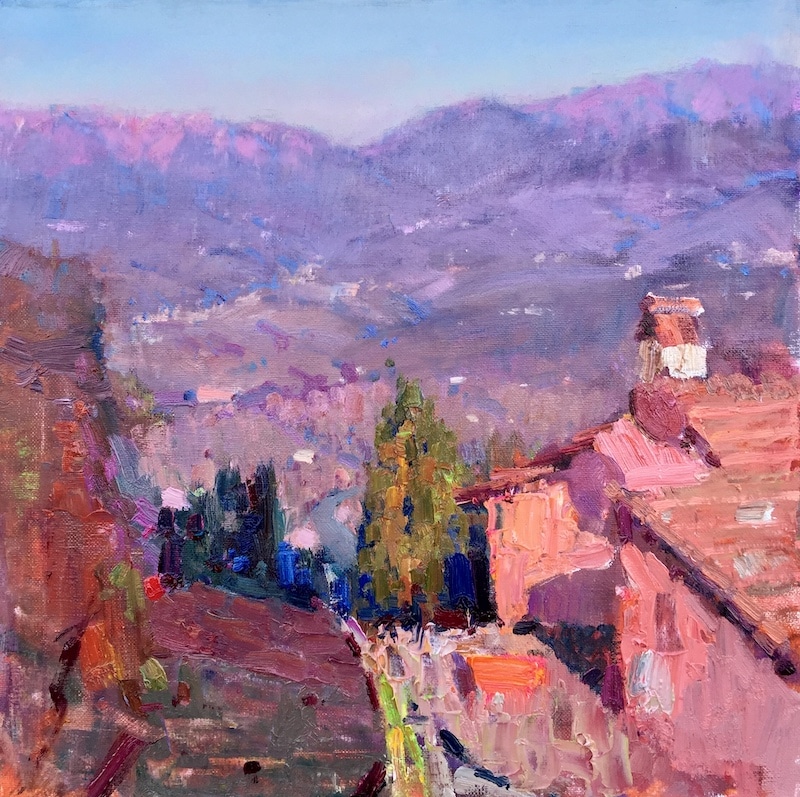
Landscape Painting Tip #6: Do Not Use Too Many Colors
Knowing how many colors to use is a big challenge for the beginner when painting landscapes. If you use too many colors, unless you are very experienced, you can very quickly find yourself in a confusing mess. A good tip is to use a limited palette of just four colors plus white. I suggest you use cadmium red dark, ultramarine blue, mars black (or ivory black, and yellow ochre. This is a fairly muted palette of colors that will harmonize very nicely. You will find that even with this limited number of tube colors that you can mix an amazing number of subtle color changes.
When you are ready to tackle more colors, you can use what is called a full spectrum palette. I describe how to use this in detail in my Apprentice Program.
Landscape Painting Tip #7: Get The Light Shade Color Pairs Accurate
When painting landscapes you will often find yourself painting an object that is partly in the light and partly in the shade.
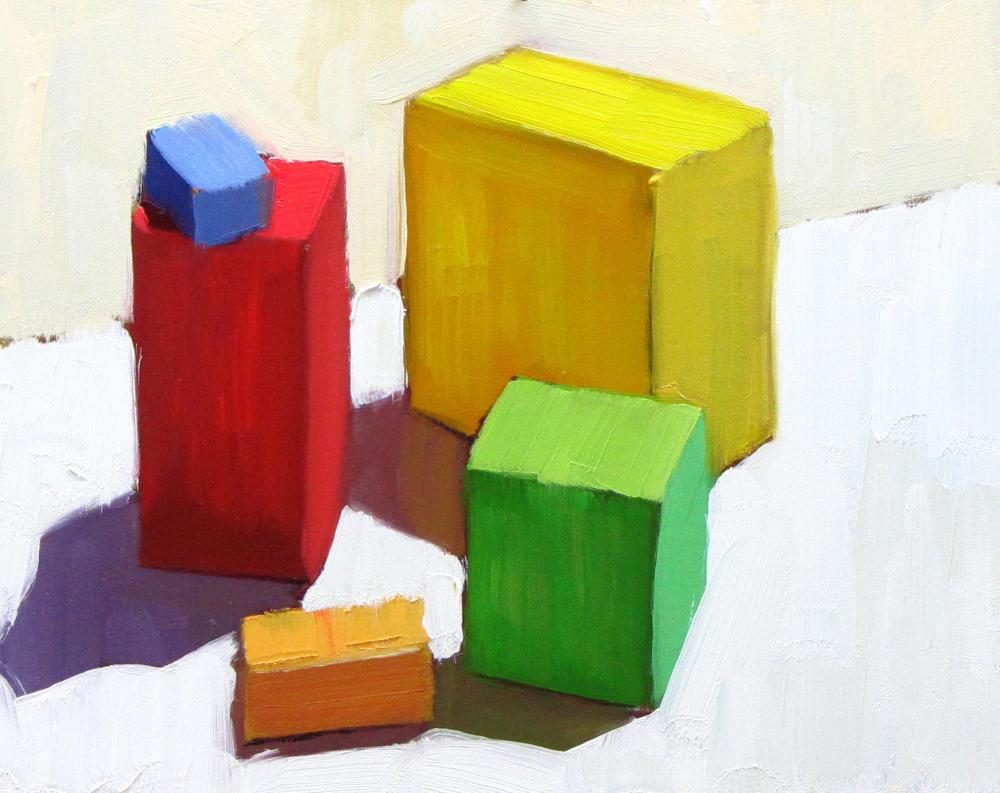
This is a wonderful opportunity to paint color pairs. By color pairs, I mean the two colors you see when light falls partly on an object, leaving part of it in shadow. These two colors have a very fixed relationship. If you get the relationship right, these two colors create a perfect color harmony. It will also give your painting a strong feeling of light. Get it wrong though, and you will lose both of these benefits.
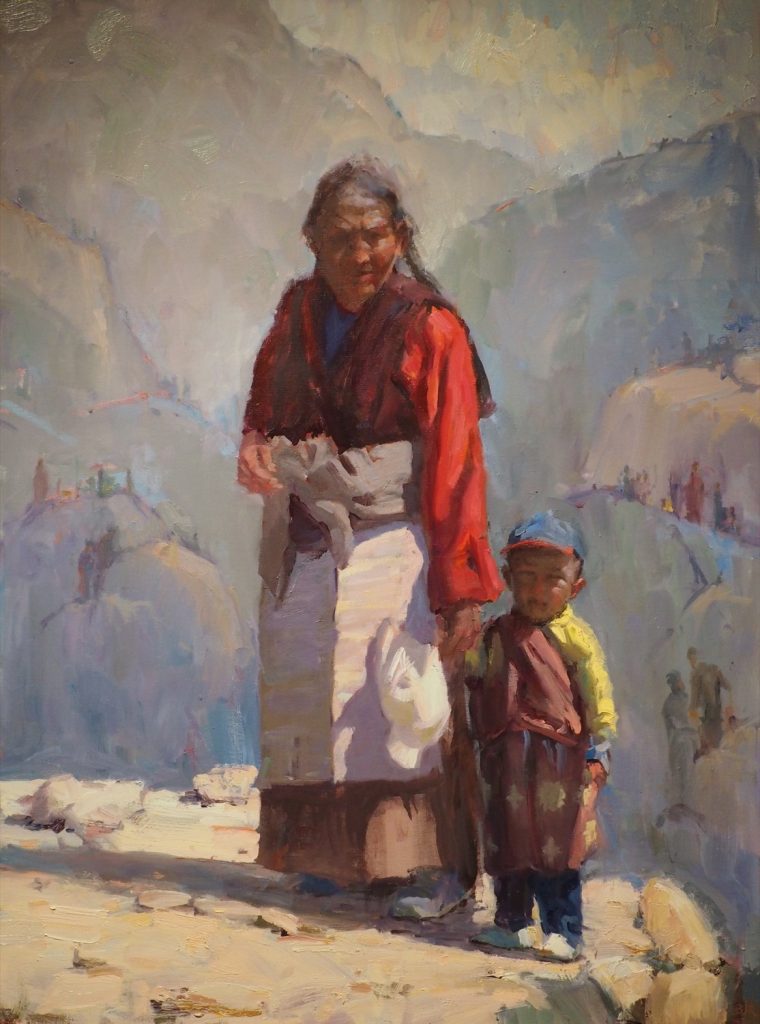
In the above painting, that I did in 2013, you can see the color pairs in the traditional shirt and apron worn by the woman, and in the clothes and baseball cap of the young Tibetan boy. I was contrasting the old and new in this painting and raising questions about the survival of traditional values in our modern world.
There is only one reliable and efficient way to get the skills you need to get this right. The method is called block studies. A variant on this is the Italian Window exercise, a method I invented in a piazza of Italy drinking a cappuccino!
You can learn more about these methods in lessons A10 and C03 of the Virtual Art Academy® Apprentice Program.
Landscape Painting Tip #8: Do A Four-Value Study
To make best use of your time I strongly recommend you do a four-value study. This is particularly important when working on larger paintings in the studio. A four-value study will save you hours of time and help you find the best composition when painting landscapes, before you start your large painting.
Here are some four-value studies done by Virtual Art Academy students.
A four-value study is a small painting you do just using black and white (or almost black and almost white), plus a light gray and a dark gray.
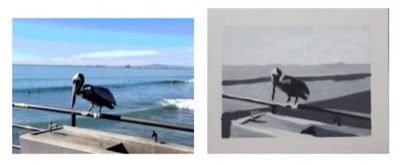

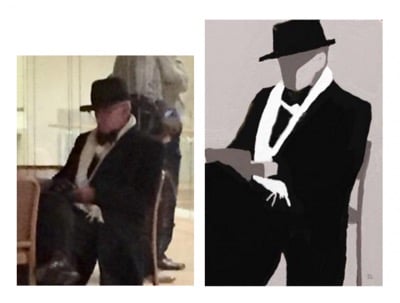
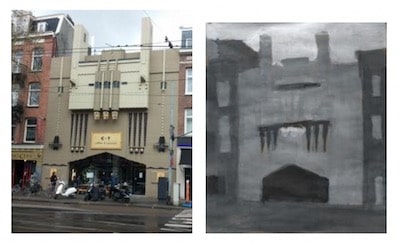
By doing this type of study when painting landscapes, you can work out issues such as space division and notan. These are the two most common issues that make beginners’ paintings fail.
You will learn much more about four-value studies in lesson B05 of the Virtual Art Academy® Apprentice Program.
Landscape Painting Tip #9: Focus On Just One Idea
If you do a painting of a road leading up to a country cottage with a horse in the field and a big mountain in the distance, your viewer will not know what to focus on. Make sure your picture has one clear idea. In the case I just mentioned, you could focus on the great size of a majestic mountain looming over the small man-made house, emphasizing how small man’s efforts are in comparison to the grandeur of nature.
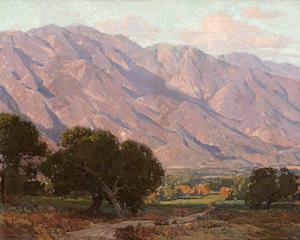
Alternatively you could focus on the horses, telling the story of their tranquil life in a luscious green field, and evoking a sense of the countryside, and maybe showing us the beauty of the warm red tones of the sun falling on the horse’s coat as the sun sets.
This is the emotional side of painting landscapes that I call ‘Visual Poetry’. This is a modern concept for critiquing art that we use in the Virtual Art Academy.
If you crop your scene to encompass the part of the view you want to paint, you will have a much stronger design.
Landscape Painting Tip #10: Use A Variety Of Brushstrokes
You can greatly improve the quality and interest in your landscape paintings by using a variety of different brushstrokes.
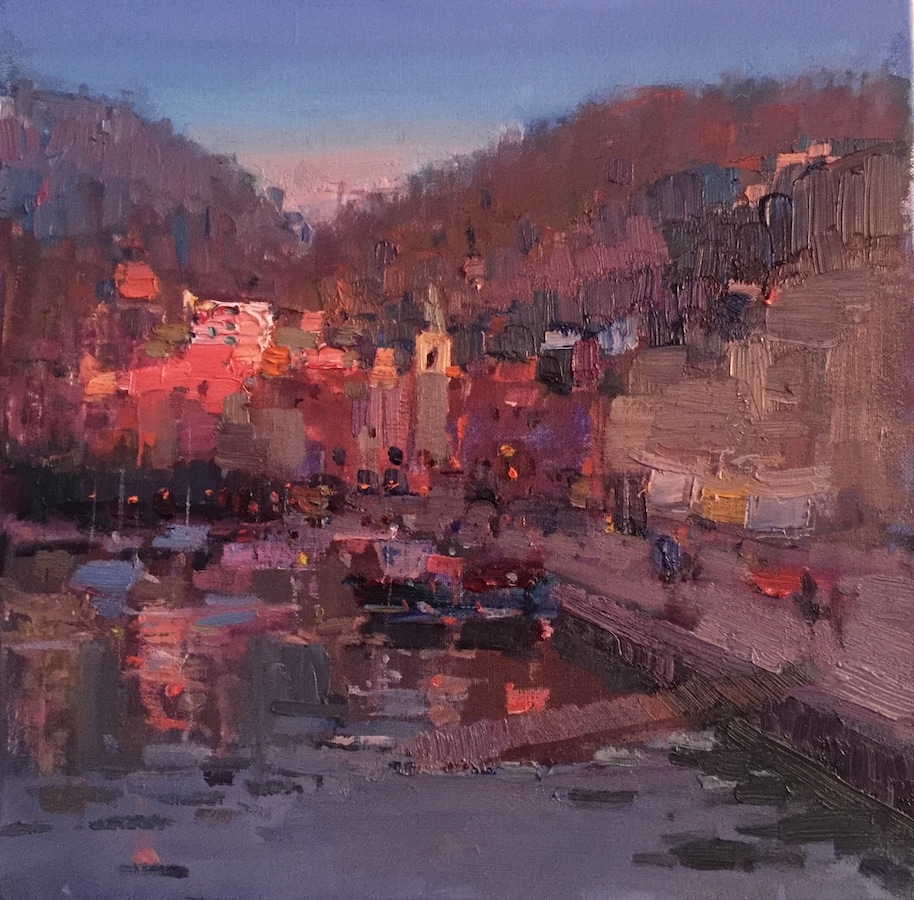
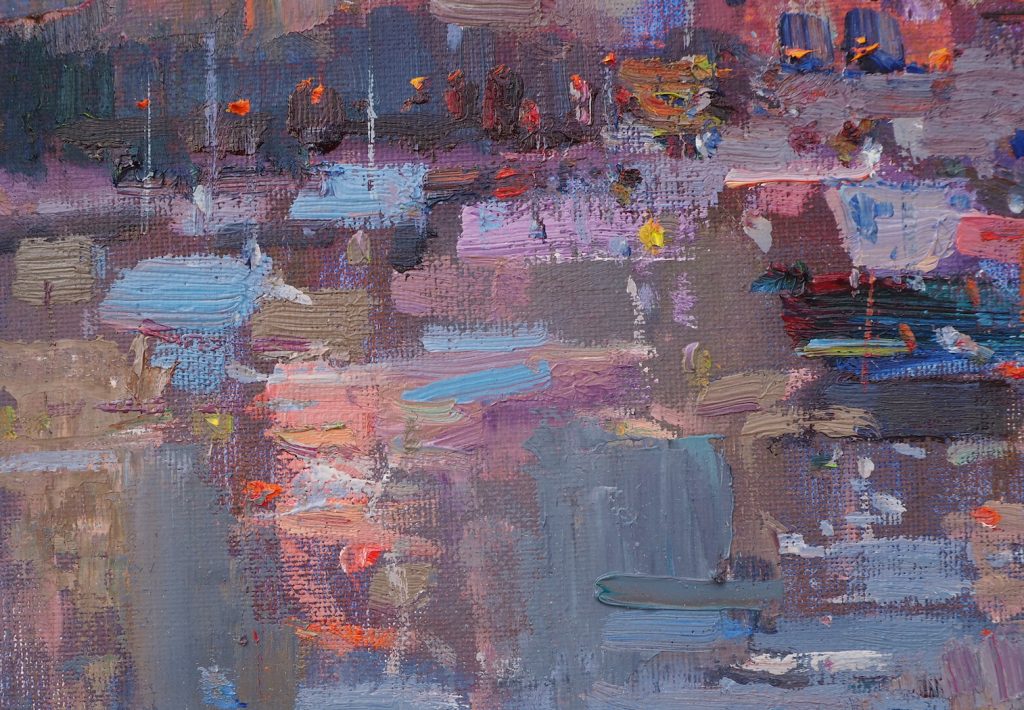
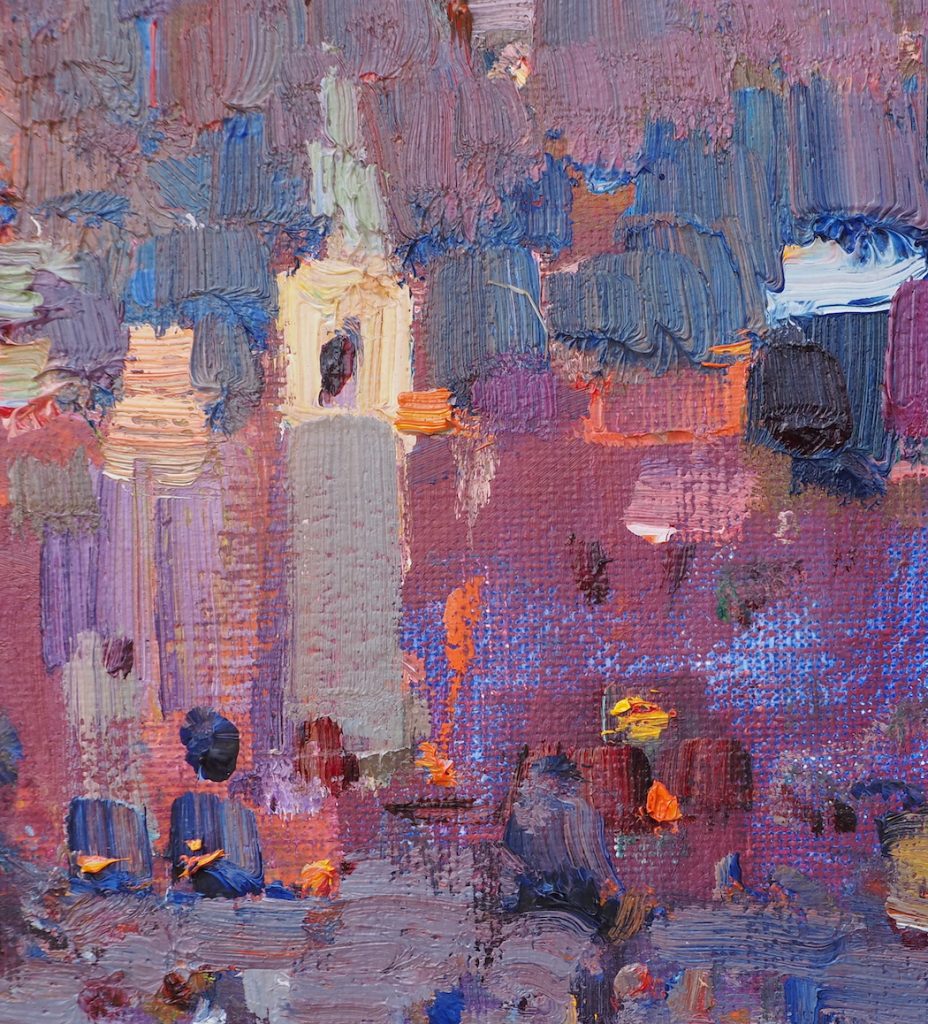
Here are some ideas:
- Use different sized brushes, at least one very large and one very small.
- Use different parts of the brush. You can use the narrow edge of the brush for small shapes, and the wide side for your larger shapes. A filbert brush is especially good for this.

- Use different types of brushes. For example in addition to regular filberts or flats, try using a mop brush or a rigger.


I call this important idea the ‘Near Music’ of a painting. You can read more about it in my course notes on Brushwork in the Virtual Art Academy Apprentice Program.
For More Information on Landscape Paintings
For more information, see:
- Background to landscape painting on Wikipedia
Thank You
Thank you for taking the time to read this article. I hope you find it useful. If you would like to get free painting tips by email, please sign up for my free tips newsletter.
If you are interested in a structured approach for learning how to paint, take a look at my online painting classes.
Happy painting!
Barry John Raybould
Virtual Art Academy
What The Students Are Saying
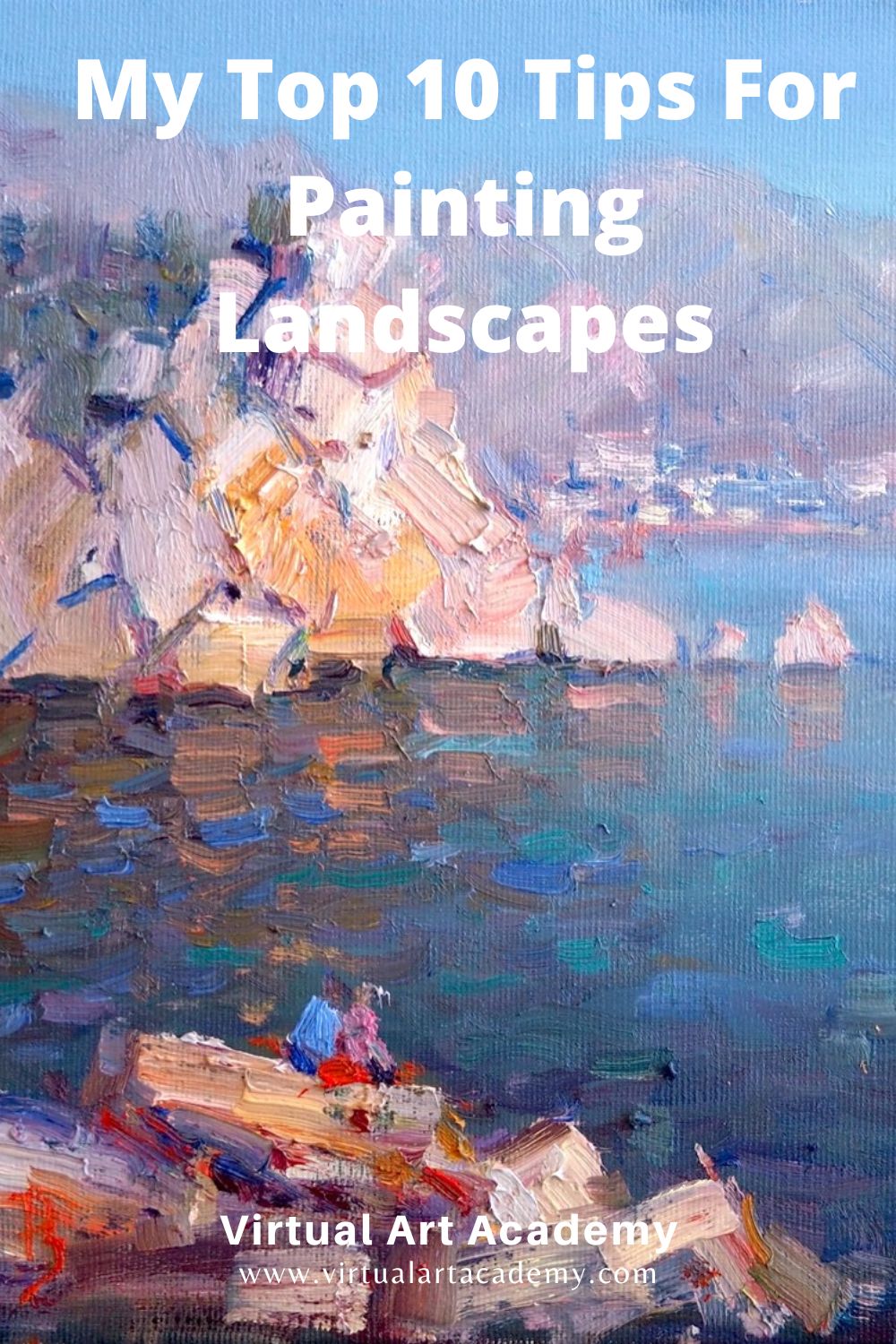
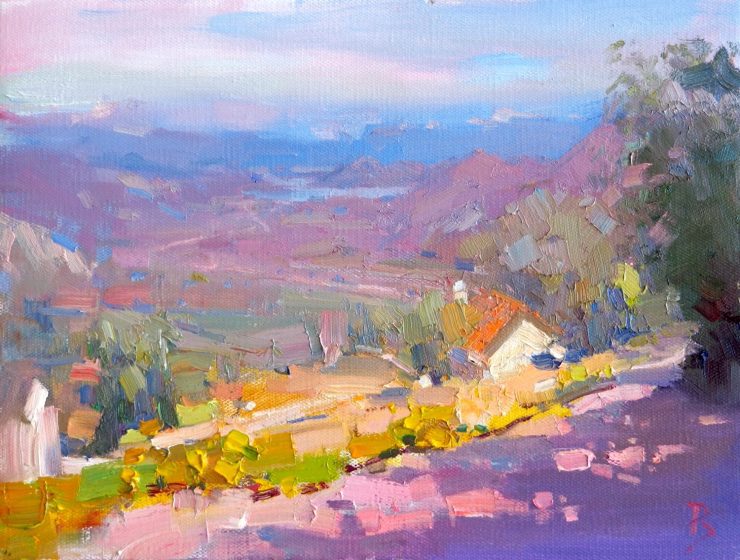



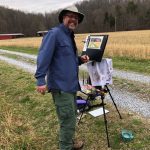





It’s wonderful you maintain communication with your students, present and former. Thank you for your generosity. After this pandemic is conquered I hope to take your workshops in Europe. It will a wonderful way to celebrate life again.
Gracias por recordármelo después de años un saludo
Thank you for sharing this knowledges,
Csaba
Thank you Barry – marvelous!
Great tips I love it 🙂 Definitely will use it in my next works 💖
Fantastic thanks Barry
Thank you very much a reminder after years. So tricky and helpful to create a masterpiece.